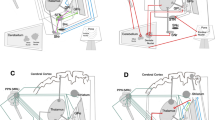Abstract
The purpose of the present study is to evaluate accelerometric parameters of gait in different neurological conditions with pathological gait impairment compared to healthy subjects. We studied 17 patients affected by Parkinson’s disease, 24 with ataxic gait due to different diseases and 24 healthy subjects supplied with a triaxial accelerometer with a portable datalogger which measures acceleration and deceleration on an anterior–posterior, mediolateral and vertical plane at an approximate level of the center of mass (back sacral localization) and in other two positions (sternal and frontal sacral region) during a steady-state walking. Analyses of the basic accelerometric parameters associated with a jerk analysis allowed us to differentiate between the population groups. We observed a significant reduction of acceleration parameters in neurological patients when compared with healthy subjects, with a reduction of the mean acceleration of 0.30 m/s2 for ataxic and 0.64 m/s2 for parkinsonian patients (t test, p < 0.01). The root-mean square of the accelerations was used to quantify the attenuations of accelerations. This study suggests that a triaxial accelerometer is a good practical and an economic tool for assessing the alteration of perambulation. Moreover, it is plausible to use these data to obtain objective parameters in the evaluation of the progression of the disease and the efficacy of therapeutic tools.



Similar content being viewed by others
References
Knutsson E (1972) An analysis of Parkinsonian gait. Brain 95(3):475–486
Kurtzke JF, Beebe GW, Nagler B et al (1977) Studies on the natural history of multiple sclerosis. Early prognostic features of the later course of the illness. J Chronic Dis 30:819–830
Ramaker C, Marinus J, Stiggelbout AM, Van Hilten BJ (2002) Systematic evaluation of rating scales for impairment and disability in Parkinson’s disease. Mov Disord 17:867–876
Marsden CD, Schachter M (1981) Assessment of extrapyramidal disorders. Br J Clin Pharmacol 11:129–151
Nutt JG, Marsden CD, Thompson PD (1993) Human walking and higher-level gait disorders, particularly in the elderly. Neurology 43:268–279
Winters JM, Loeb G (2000) Biomechanics and neural control of posture and movement. Springer, New York
Carletti T, Fanelli D, Guarino A (2006) A new route to noninvasive diagnosis in neurodegenerative diseases? Neurosci Lett 394:252–255
Busse ME, Pearson OR, van Deursen R, Wiles CM (2004) Quantified measurement of activity provides insight into motor function and recovery in neurological disease. J Neurol Neurosurg Psychiatry 75:884–888
Pélissier J, Boisson D (1994) Les paramètres de la marche humaine : techniques actuelles d’exploration. In: Pélissier J, Brun V (eds) La marche humaine et sa pathologie. Masson, Paris, pp 41–55
Van Hilten JJ, Middelkoop HAM, Kerkhof GA, Roos RAC (1991) The assessment of motor activity in Parkinson’s disease: a new approach. J Neurol Neurosurg Psychiatry 54:976–979
Van Hilten JJ, Hoogland G, Van der Velde EA et al (1993) Quantitative assessment of parkinsonian patients by continuous wrist activity monitoring. Clin Neuropharmacol 16:36–45
Katayama S (2001) Actigraph analysis of diurnal motor fluctuations during dopamine agonist therapy. Eur Neurol 46(Suppl 1):11–17
Culhane KM, O’Connor M, Lyons D, Lyons GM (2005) Accelerometers in rehabilitation medicine for older adults. Age Ageing 34:556–560
Hogan N, Sternad D (2009) Sensitivity of smoothness measures to movement duration, amplitude, and arrests. J Mot Behav 41(6):529–534
Cavagna GA, Tesio L, Fuchimoto T, Heglund NC (1983) Ergometric evaluation of pathological gait. J Appl Physiol 55(2):607–613
Moe-Nilssen R (1998) A new method for evaluating motor control in gait under real-life environmental conditions. Part 1 and 2: the instrument and gait analysis. Clin Biomech 13:320–335
Moe-Nilssen R (1998) Test–retest reliability of trunk accelerometry during standing and walking. Arch Phys Med Rehabil 79:1377–1385
Paquet JM, Auvinet B, Chaleil D, Barrey E (2003) Analyse des troubles de la marche par une methode accélérométrique dans la maladie de Parkinson. Rev Neurol (Paris) 159:768–789
Mancini M, Horak FB, Zampieri C, Carlson-Kuhta P, Nutt JG, Chiari L (2011) Trunk accelerometry reveals postural instability in untreated Parkinson’s disease. Parkinsonism Relat Disord 17(7):557–562
Caliandro P, Ferrarin M, Cioni M, Bentivoglio AR, Minciotti I et al (2011) Levodopa effect on electromyographic activation patterns of tibialis anterior muscle during walking in Parkinson’s disease. Gait Posture 33(3):436–441
Winter DA (1991) The biomechanics and motor control of human gait: normal, elderly and pathological, 2nd edn. University of Waterloo Press, Waterloo
Winter DA (1995) Human balance and posture control during standing and walking. Gait Posture 3:193–214
Kamen G, Patten C, Sison S (1998) An accelerometry-based system for the assessment of balance and postural sway. Gerontology 44:40–45
Kavanagh JJ, Hylton BM (2008) Accelerometry: a technique for quantifying movement patterns during walking. Gait Posture 28:1–15
Hirasaki E, Kubo T, Nozawa S, Matano S, Matsunaga T (1993) Analysis of head and body movements of elderly people during locomotion. Acta Otolaryngologica 501:25–30
Smeathers JE (1989) Measurement of transmissibility for the human spine during walking and running. Clin Biomech 4:34–40
Pozzo T, Berthoz A, Lefort L (1990) Head stabilization during various locomotor tasks in humans. I. Normal subjects. Exp Brain Res 82:97–106
Kavanagh JJ, Morrison S, Barrett RS (2005) Coordination of head and trunk accelerations during walking. Eur J Appl Physiol 94(4):468–475
Orendurff MS, Segal AD, Klute GK, Berge JS, Rohr ES, Kadel NJ (2004) The effect of walking speed on center of mass displacement. J Rehabil Res Dev 41(6):829–834
Tesio L, Rota V, Perucca L (2011) The 3D trajectory of the body centre of mass during adult human walking: evidence for a speed-curvature power law. J Biomech 24(44):732–740
Acknowledgments
The study was supported by Fondazione Cassa di Risparmio di Cento. The authors thank Dr. Eva Sjolin for her help in revising the translation of the manuscript. We would also like to express our sincere appreciation to Mario Manca for helpful comments on the manuscript.
Author information
Authors and Affiliations
Corresponding author
Rights and permissions
About this article
Cite this article
Fazio, P., Granieri, G., Casetta, I. et al. Gait measures with a triaxial accelerometer among patients with neurological impairment. Neurol Sci 34, 435–440 (2013). https://doi.org/10.1007/s10072-012-1017-x
Received:
Accepted:
Published:
Issue Date:
DOI: https://doi.org/10.1007/s10072-012-1017-x




